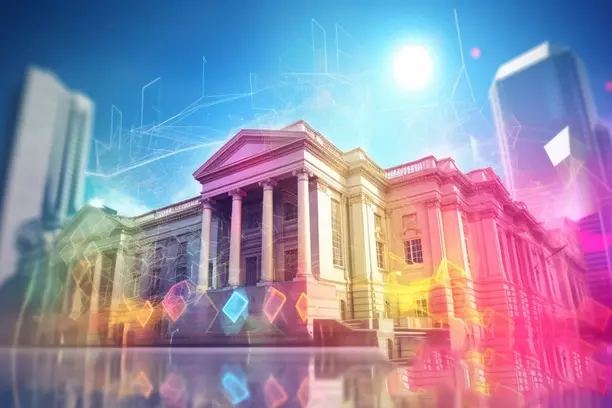The development of blockchain technology has made "blockchain assets" a hot topic in the global financial field. Blockchain assets are digital assets generated or managed based on blockchain technology, including cryptocurrencies, smart contracts, tokenized assets and other forms. These assets are decentralized, secure, transparent, and programmable, which bring challenges to the traditional financial system and open up new application scenarios. In this paper, we will explore the core advantages and features of blockchain assets and their applications in different fields.

Blockchain Asset Features
One of the best features of blockchain assets is decentralization. Traditional financial systems usually rely on intermediaries, such as banks or payment platforms, to complete asset transactions and settlements, but blockchain technology enables peer-to-peer asset exchange without intermediaries through decentralization. Each transaction on the blockchain is public and tamper-proof, which makes blockchain assets highly secure.
The "transparency" of blockchain assets is also one of its main features. All transaction records are publicly and permanently stored on the blockchain, and anyone can inquire about these transactions, which not only enhances trust, but also effectively prevents fraud. Transactions conducted on the blockchain are irreversible, and once confirmed, they cannot be changed or deleted, which further enhances the security and traceability of assets.
Core Benefits: Security and Decentralization
One of the core advantages of blockchain assets is their strong security. As the blockchain network runs in a decentralized mode, an attacker cannot easily control or modify any of the transaction records in it, which effectively improves the asset's security defenses. Blockchain's encryption algorithms, such as Proof of Work (PoW) and Proof of Stake (PoS), further safeguard the integrity and security of transactions.
Decentralization is another important advantage of blockchain assets. In a traditional financial system, a bank or other financial institution acts as the central authority to control and regulate transactions. Blockchain technology does not rely on any single institution, but rather maintains system operations through a decentralized network, which not only makes transactions more transparent, but also reduces the risk of a single point of failure.
Application Areas for Blockchain Assets
Blockchain assets are widely used in various industries. Cryptocurrency is one of the most typical blockchain assets. Cryptocurrencies such as Bitcoin and Ether have been accepted by more and more merchants and users as value storage and payment tools, and have the advantage of cross-border payments.
In addition to cryptocurrencies, smart contracts are one of the key applications of blockchain assets. Smart contracts are a form of self-executing, intermediary-free contracts that automatically fulfill the terms of the contract on the blockchain. This enables the use of blockchain in finance, insurance, and IoT, reducing transaction costs and increasing efficiency.

Blockchain can also be applied to "tokenized assets", such as the tokenization of physical assets such as artwork, real estate, and commodities, which allows these assets to be traded digitally, reduces liquidity issues, and opens up new ways to invest.
Growth Potential of Blockchain Assets
With the continuous innovation and improvement of blockchain technology, the growth potential of blockchain assets should not be underestimated. Currently, the application areas of blockchain assets are still in the stage of rapid development, and many traditional industries are gradually incorporating them into their daily business and realizing digital transformation.
Blockchain technology is reportedly poised to take its place in the global financial market in the coming years. Taking cryptocurrencies as an example, the market capitalization of Bitcoin and Ether has exceeded hundreds of billions of US dollars in just a few years, which has made the potential of blockchain assets gained a high level of attention from global investors. With the popularization of blockchain technology, blockchain assets in the future may cover more asset types and drive structural changes in the global economy.
Challenges and Future Outlook for Blockchain Assets
Despite the many advantages of blockchain assets, they also face a number of challenges. The scalability of blockchain technology still needs to be addressed. Mainstream blockchain platforms, such as Ether, experience slower transaction processing and higher fees when transaction volume surges, which poses a limitation to their large-scale application.
The regulation of blockchain assets is also an issue that needs to be resolved. With the development of blockchain technology, more and more countries and regions are paying attention to the regulatory policies of cryptocurrencies and other blockchain assets. How to strike a balance between safeguarding innovation and security has become an important issue for governments to face.
In the future, as technology advances, blockchain assets are expected to address some of the current limitations and enable a wider range of applications globally. Blockchain technology will further improve its scalability, reduce transaction costs, and drive the digital transformation of more industries.
Conclusion: The Potential of Blockchain Assets is Unlimited
As a new type of digital asset, blockchain assets are gradually changing the world's economic landscape. Its decentralization, security and transparency, and smart contracts make it an important part of the future financial market. Despite the challenges, the potential of blockchain technology is still limitless and its application in more industries will continue to expand in the future. For investors, understanding the characteristics and applications of blockchain assets will help them capitalize on future market opportunities.














